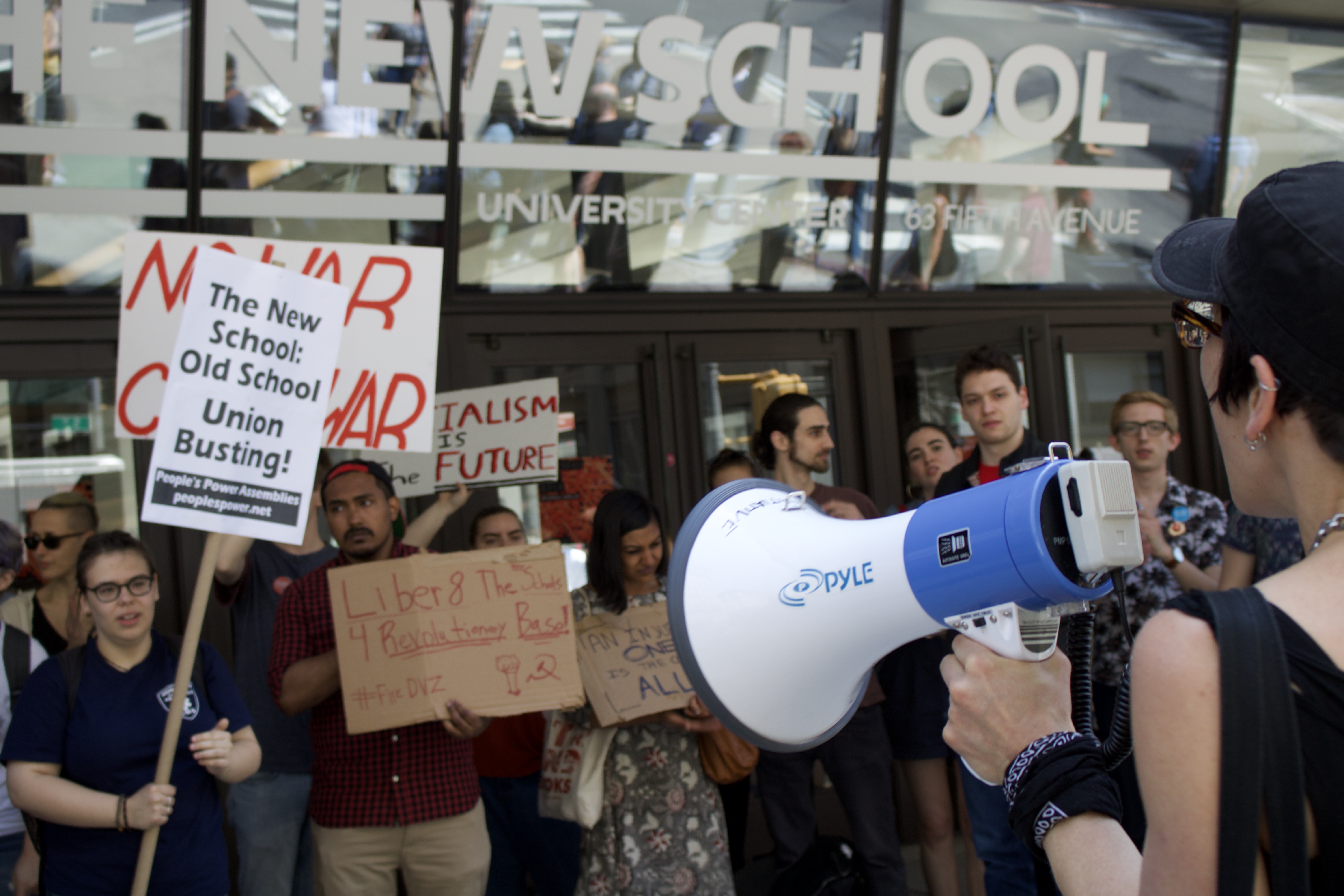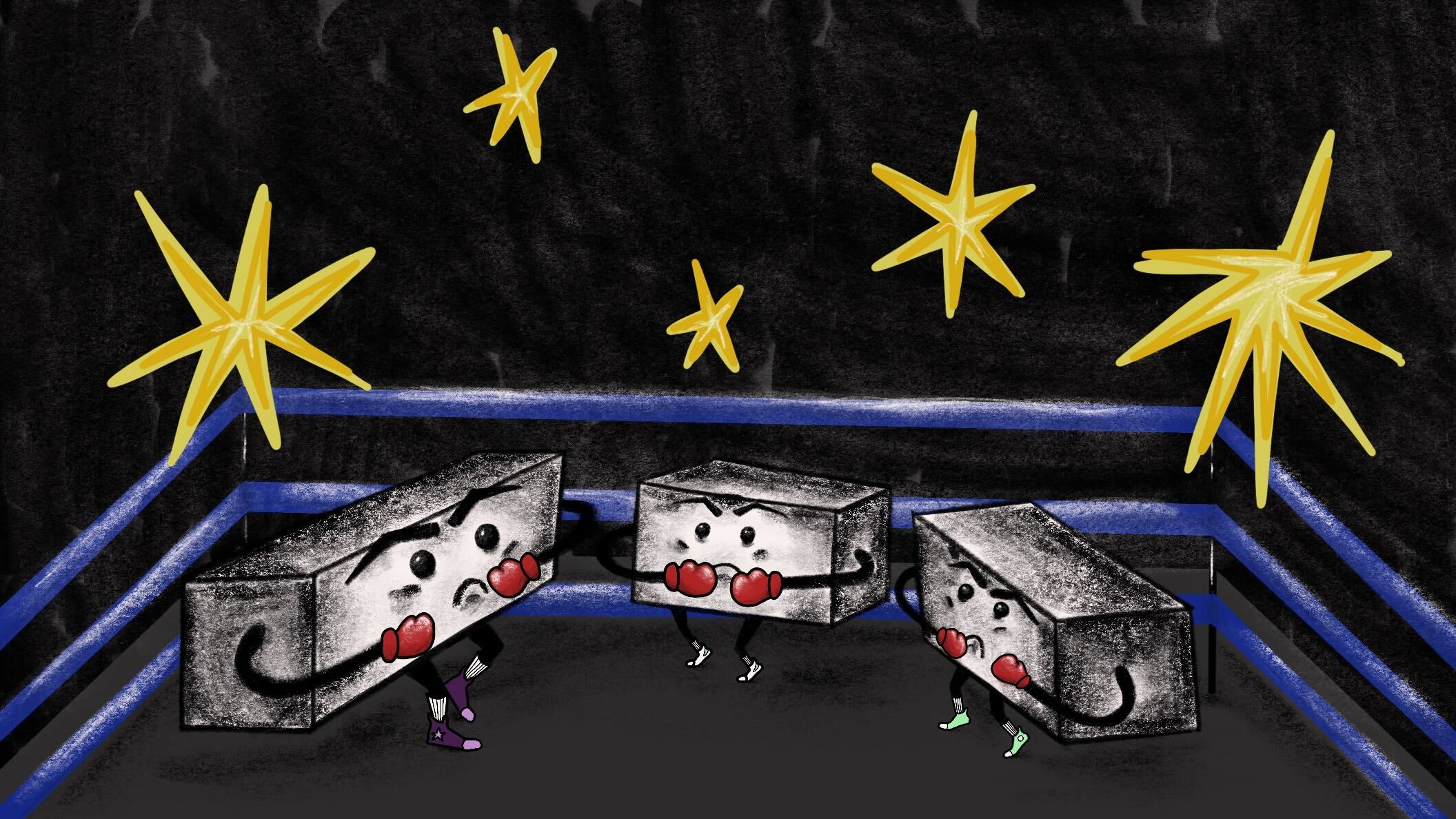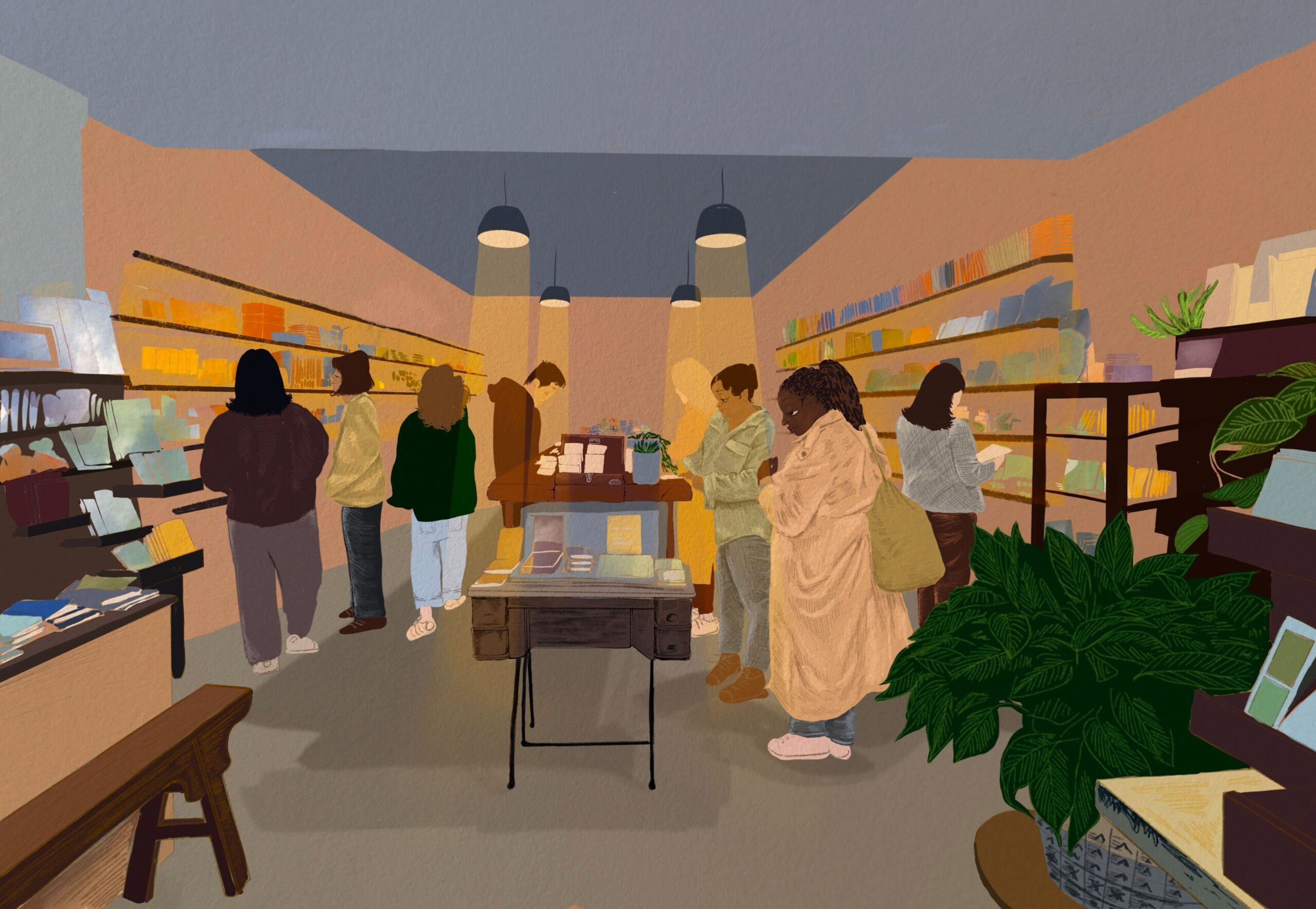Max Head is a graduating fourth-year student studying politics at Lang. Head has worked closely with SENS-UAW and has followed the various emerging labor struggles at the New School.
On International Workers’ Day, May 1, students at the New School commenced an occupation of the school cafeteria in protest of the announced layoffs of 45 cafeteria workers. In response, David Van Zandt announced that the university has opened discussions with the union representatives of the cafeteria workers, Unite Here. The occupation continues.
The sheer organizational effort behind the occupation of the cafeteria should be praised. Without it, and without the continued support and energy of the students still sitting in protest, this remarkable event is hard to imagine.
But there have also been some troubling aspects to the organization of the occupation.
Anti-Union Literature
The May 1 occupation was organized by the Communist Student Group (CSG) in support of the cafeteria workers. The organizers began an aggressive and thorough flyering campaign just prior to May 1. The CSG was not alone in spreading the word about the announced layoffs of the 45 cafeteria workers. I myself learned about the announced layoffs a short time earlier when I attended an open meeting of the student workers’ union, SENS-UAW, though I am not a member. Unite Here Local 100 was invited to present and opened the meeting by giving space for several cafeteria workers to speak. Local 100 and SENS-UAW representatives discussed ways to rally student support, which they agreed could be a crucial factor in helping to prevent the layoffs.
This makes the instances of anti-union rhetoric and sentiment on the part of the occupation’s organizers all the more confusing and troubling.
In much of the enthusiastic flyering prior to and by the beginning of the May 1 occupation, there were persistent and targeted attacks upon Local 100 and labor unions generally. On the one hand, the organizers castigate the New School administration for union-busting, a valid criticism. On the other, the organizers delegitimize Local 100, claiming that it “impedes the formation of a unified camp of struggle by sacrificing some workers in order to maintain good relations with the enemy.” They also condemn unions generally, claiming that unions inhibit their workers from organizing properly. “We believe unions cannot be relied upon. The workers can count on only their own political organization: the revolutionary Party of the future,” wrote the CSG.
Apparently, the only proper form of organization is the particular communist ideal of the CSG.
At times, the anti-union claims drift into misinformation. One document claims that Local 100 is neither resisting the layoff nor properly attempting to rally student support. This is a misrepresentation of Local 100’s activities. Local 100 has worked to rally student support, distributing their petition, flyers, and stickers reading “I Support Cafeteria Workers!” CSG’s criticism of Local 100 is perhaps borne of frustration, but it does not excuse the spread of anti-union misinformation.
“Real Workers”
A particularly troubling instance of anti-union sentiment from the organizers of the occupation came during a SENS-UAW strike meeting the day before the May Day occupation. Several representatives from the CSG were given a few moments at the beginning of the session to announce their May 1 action.
Some time later, while SENS-UAW members were discussing their concerns about their own strike, one CSG representative raised a hand and was given a chance to speak again. After a few statements regarding the importance of their May 1 action, the SENS-UAW representatives replied that their limited meeting time was for SENS-UAW issues, but they would happily discuss the May 1 occupation at another time. The CSG representative responded by again stressing the importance of the occupation. This CSG representative referred to the cafeteria workers as “real workers,” apparently in contrast to the room at large. This sparked a response from SENS members: “What exactly do you mean by ‘real workers’?”
To deny student workers the legitimate title of “worker” was a tactic of the administration when SENS-UAW struggled to be recognized as a union. The National Labor Relations Board, a federal body, recognized SENS-UAW as a labor union and its constituency as workers. I know many student workers at the New School working several jobs, balancing full-time work and full-time studies, caring for families and children, under intense strain to make ends meet. Such struggle is labor struggle.
Many student workers were understandably upset and alienated by this tendency of the CSG organizers. Yet when I attended the occupation on May 1, I saw many red SENS-UAW shirts in attendance. After their own May 1 rally, SENS-UAW organizers sent their attendees up to join the occupation. Support for the cafeteria workers among student workers remains strong.
Claims to Representation
A majority of the flyers and announcements I heard made via megaphone on the first day of the occupation once again extolled the virtues of the communism and socialism and their essential role in the liberation of the cafeteria workers. I have not heard such sentiments from the cafeteria workers themselves. Excerpts from the organizers’ flyers indicate that students should be the “reinforcements” of the cafeteria workers’ struggle. The organizers, at least on the first day of the occupation, seem instead to have taken it upon themselves to lead, rather than reinforce.
With Us or Against Us
In CSG literature, the organizers repeatedly divide students into three categories: “anti-worker students,” “indifferent students,” and “pro-worker students.” The former two are positioned as enemies of the third.
This is a ‘with us or against us’ mentality. It divides the world into two camps: ally and enemy. When trying to build and organize support, this is a poor tactic. It rejects the reality of plural perspectives on how best to support workers. It reduces the ability of participants to discuss the best courses of action. It alienates possible allies who do not adhere to particular dogma. I spoke to more than a few people who expressed hesitation at attending the occupation for this reason.
Looking to the Future
Despite the various concerns, the occupation on May 1 was well-attended and remains so. I myself have attended despite these concerns, and I intend to return again.
I voice my concerns here precisely because of my support, and because I know other supporters and attendees who share my concerns.
As student allies to workers, we must address these concerns.
The efforts of the original organizers as well as enthusiastic students who have now taken a more active role have aided continued community engagement.
More, it seems a plurality of voices are starting to rise into the mix. Different faces appear each time I visit the occupation site. New posters and literature show up on the walls and desks.
I hope also that now is a time when we can look critically upon ourselves and work hard to improve the ways in which we stand by workers and friends.
We can begin to do so in the following ways:
First, we can publicly recognize the legitimacy of Local 100 and its role as representative of the cafeteria workers. We can also publicly recognize the support and organizational roles played by Local 100, SENS-UAW, and the numerous other union allies.
Second, we can allow cafeteria workers to speak for themselves more often. I have heard many of the workers speak, and they speak powerfully. We do not need to translate anything. Our support for the cafeteria workers can be as auxiliaries, not as representatives.
Third, we can seek allies and form coalitions. We can encourage public discourse and debate.
The cafeteria workers’ struggle is not over, despite the gains. The workers of SENS-UAW are still mobilizing support for their May 8 strike and their struggle to gain a fair contract. If the past is any gauge to the future, there will be more questions of social justice to come. Looking to the present, to ourselves with a critical eye, we can look to the future with hope.
Photo by Katherine Badala.







